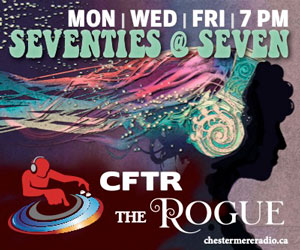In all of my years as a tippler, Chardonnay has always been the default selection for novice white wine drinkers, with its unassuming flavour and nonthreatening name. Indeed, novice wine drinkers had nothing to fear from Chardonnay, so were content to leave the complicated Gewürztraminer and Sémillon wines to their more adventurous drinking companions.
Just such an occasion happened this past weekend , during some impromptu sunny patio imbibing with friends, coincidentally on National Pinot Grigio Day, when I pulled a few bottles of Pinot Gris out of the wine fridge.
For those not familiar with the varietal, the same white wine grape is known as Pinot Grigio in Italy, Pinot Gris in France, Grauburgunder in Germany, and more than a dozen other names in assorted countries that grow the same grape.
This white grape is thought to be a spontaneous mutation of the red Pinot Noir grape, splitting off from its parent in the Burgundy region of France sometime in the Middle Ages. The grape varietal spread across Europe in the 1300s, reaching as far east as the Russian steppes by the end of the century, and even into China not long after. While the grape is grown in dozens of countries, it does particularly well in northeastern Italy and the Alsace region of France.
Pinot Grigio plantings have thrived in the New World as well, with the thundering juggernauts of Australia and California putting more acres under vine every year. Even in Canada’s small wine growing regions such as the Okanagan Valley, Pinot Gris plantings have grown steadily over the past decade, and are now nearly on par with plantings of Chardonnay.
French winemakers will label their bottles as Pinot Gris, while their Italian counterparts will use Pinot Grigio. Outside of Italy and France, most winemakers will label a wine as either a Pinot Gris or a Pinot Grigio to more accurately reflect the style it is made in. Richer wines tend to be labeled as Pinot Gris, while the crisper versions made from the same grape tend to be labeled as Pinot Grigio. Of course, some winemakers throw all caution to the wind and choose one label or the other on a whim.
Pinot Grigio tends not to age as well as other wines, so most should be consumed within a year of purchase. Luckily, the wine is quick and relatively inexpensive to produce, as it is rarely aged in expensive oak barrels. After a month or two in stainless steel vats after fermentation, Pinot Grigio is generally ready to be bottled and released to the public. This quick turnaround in the winery often translates to an inexpensive price tag at your local booze merchant, so most Pinot Grigio wines come in at the $17-$23 mark.
Pinot Grigio pairs remarkably well with salmon, so lug a bottle along on your next fishing trip, or save yourself the effort and just order a glass at your local seafood restaurant.
Here in Canada, perhaps due to French being an official language, most of our domestic wineries choose to label their wines as Pinot Gris rather than Pinot Grigio. Whichever moniker is used, this grape makes up around 21% of the white grape plantings in the Okanagan Valley, and is a consistent seller year after year.
This grape came to Canada back in the swinging 1970’s, when the Gray Monk winery was started by a family that had recently emigrated to Canada from Austria, where the Pinot Grigio grape is called Grauar Mönch, which translates into English as Gray Monk. Since their entire winery is named after the grape we know as Pinot Grigio, the Gray Monk winery has long been my go-to supplier for Pinot Grigio / Pinot Gris.
The Gray Monk Pinot Gris is made in the classic style, with plenty of spicy herbal flavours, and a lingering finish reminiscent of apples and peaches. Found at well-stocked Alberta liquor stores for under $20, this wine is a steal.
Whichever way you choose to label this grape, there are plenty of choices to be found at your friendly neighborhood booze merchant, so get yourself off that boring Chardonnay bandwagon and make the jump to Pinot Grigio / Pinot Gris!
You and Me and Pinot Gris

In response to Canada's Online News Act and Meta (Facebook and Instagram) removing access to Canada's local news from their platforms, Anchor Media Inc encourages you to get your news directly from your trusted source by bookmarking this site and downloading the Rogue Radio App. Send your news tips, story ideas, pictures, and videos to info@anchormedia.ca.





